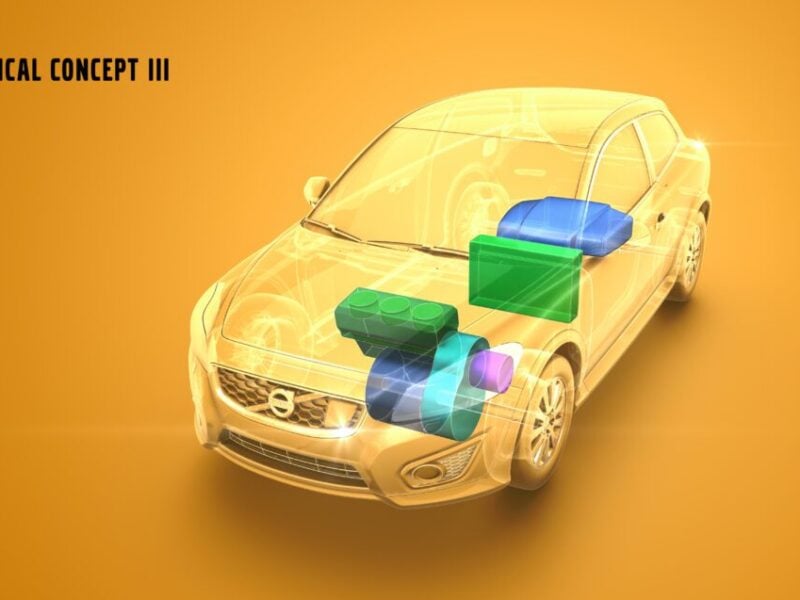
Volvo tests various range extender concepts for e-cars
The company regards range extenders as the best way to overcome the range limits of electric vehicles operating solely on battery power. Derek Crabb, Volvo’s Vice President Powertrain Engineering, said he expects that the additional combustion engines could extend the driving range to more than 1000 kilometers – operated on battery power alone, the driving range of e-cars typically does not exceed the 200 km mark.
Volvo’s technological developments in this area currently encompass three different technology combinations, with three-cylinder petrol engines being installed to complement electric drive to the front wheels. All the variants feature brake energy regeneration. The engines can run on both petrol and ethanol (E85).
Two of the solutions are based on the Volvo C30 Electric. In both cases, the standard battery pack has been somewhat reduced in size to make room for the combustion engine and its fuel tank.
Concept I is based on a C30 Electric with a three-cylinder combustion engine producing 60 horsepower (45 kW) installed under the rear load compartment floor. The car also has a 40 litre fuel tank.
The combustion engine is connected to a 40 kW generator. The power it generates is used primarily to drive the car’s 111 horsepower (82 kW) electric motor, but the driver can also choose to let the generator charge the battery, thus increasing the car’s operating range on electricity.
The range extender increases the electric car’s range by up to 1,000 km – on top of the 110 km range provided by the car’s battery pack.

In concept II, the car gets a more powerful three-cylinder combustion engine at the rear and a 40 litre fuel tank. The difference between this and the first solution is the parallel connection, whereby the turbocharged 190 horsepower engine primarily drives the rear wheels via an automatic transmission. This gives a better fuel efficiency rating when driving with the combustion engine cruising on the highway. A 40kW generator can also charge the battery to give the car increased range on electricity alone.
Here too the electric motor is a 111 hp (82 kW) unit. The two power sources give the car more than 300 hp in total, and acceleration from 0-100 km/h of less than six seconds.
The range extender increases the electric car’s range by more than 1,000 km – in addition to the range of up to 75 km provided by the car’s battery pack.

Concept III is a solution whereby the entire drive package is installed under the bonnet at the front. The 111 hp (80 kW) electric motor is supplemented with a three-cylinder petrol turbo engine producing 190 hp (140 kW), a two-stage automatic transmission and a 40 kW generator. Power from the combustion engine drives the front wheels via the gearbox and recharges the battery pack whenever needed.
Up to 50 km/h, the car is always powered solely by electricity. The combustion engine is activated at higher speeds. What is more, it charges the battery pack when its charge drops below a predetermined level.
The battery pack is located under the rear load floor and it gives the driver a range of 50 km on electricity alone. The car also has a 45 litre tank for petrol or E85.
With this technology, the range extender increases the car’s total range by more than 1,000 kilometres.

The series-hybrid range extender in the C30 is part of an EU project in which the Volvo Car Corporation is the only car manufacturer among eight partners. The company’s two parallel-hybrid range extender solutions are being developed with a grant of SEK 10.8 million (EUR 1.2 million) from the Swedish Energy Agency.
 If you enjoyed this article, you will like the following ones: don't miss them by subscribing to :
eeNews on Google News
If you enjoyed this article, you will like the following ones: don't miss them by subscribing to :
eeNews on Google News




